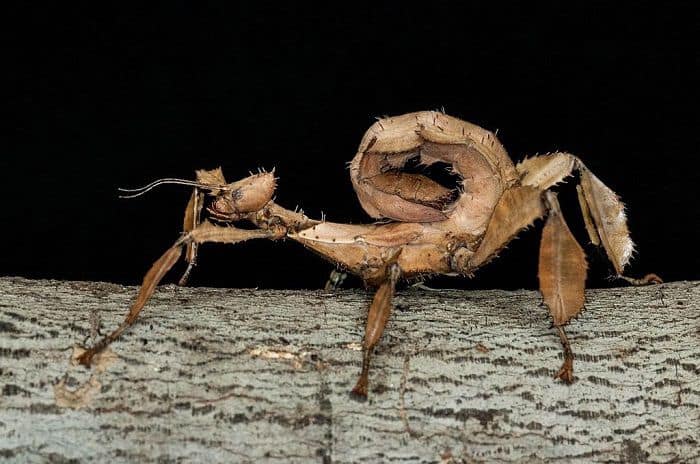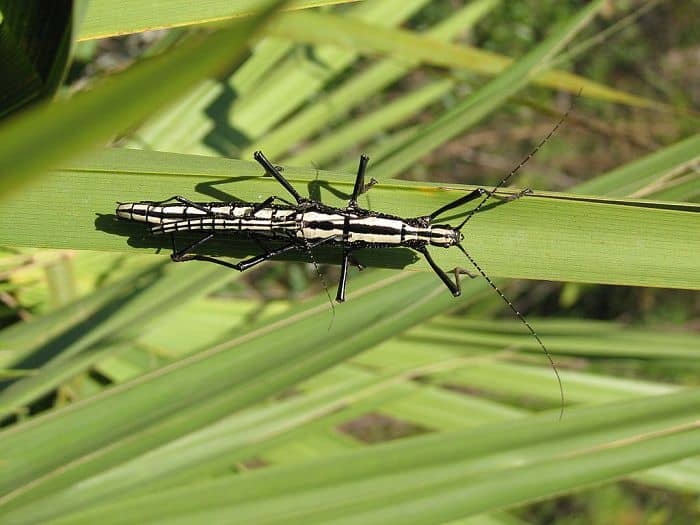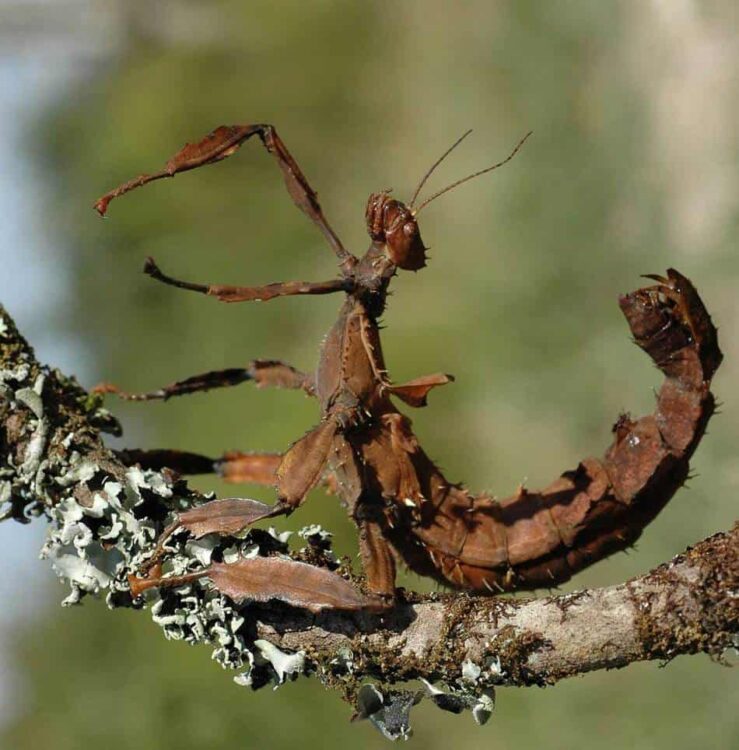Table of Contents
Stick insects are among the most curious insects to watch. Their highly unusual shapes and colours make them look more like plant life (thus the name) than animal life. This is by nature’s design. Some stick insects look so strange as to be frightening. That leads people to ask, “are stick insects dangerous”?
No, stick insects are not dangerous. Human beings have been keeping stick insects for generations without any issues. Though a stick insect may not look like the most attractive creature you’ve ever seen, you are in no danger of being harmed by them.
for generations without any issues. Though a stick insect may not look like the most attractive creature you’ve ever seen, you are in no danger of being harmed by them.
Feel free to keep as many stick insects as you like. They will not harm children or pets.
For more advice and information on keeping and looking after stick insects, check out my ebook on Amazon click here
(opens in a new tab).

Thousands of Different Species
Stick insects are incredibly fascinating because there are so many species. To date, science has classified somewhere around 3,000 distinct kinds of stick insects found all over the world. When someone asks, “are stick insects dangerous?”, the first thing to talk about is the most predominant species. Why? Because some actually do look dangerous.
Take the giant prickly stick insect (Extatosoma tiaratum) as an example. This particular species looks like a cross between a thorny branch and a scorpion . It can seem terrifying to someone who doesn’t like insects to begin with. You might see one and instantly be afraid because of all of the prickly spines covering the insect’s body.
. It can seem terrifying to someone who doesn’t like insects to begin with. You might see one and instantly be afraid because of all of the prickly spines covering the insect’s body.
Those prickly spines are not a danger to human beings. If you hold the giant prickly stick insect the wrong way, you could get pricked. But that’s about it. What you felt would be no different than being pricked by a thorn. On the other hand, the prickly fangs are bad news for predators.
Any predator thinking this species of stick insect would make a good meal has to be willing to eat the prickly spines along with everything else. That’s bad enough. But the insect has another defence mechanism: it can curl up its tail to mimic a poisonous scorpion. This is often enough to keep all but the hungriest predators at bay.
to mimic a poisonous scorpion. This is often enough to keep all but the hungriest predators at bay.
For the record some of the other scary looking species include the jungle nymph, New Guinea spiny stick insect, and thorny stick insect. All have prickly spines to contend with.

Defence from Predators
With very few exceptions the spines, fangs, and prickles built in to stick insect biology are a defence from predators. Nature has seen fit that every creature on the food chain has some means of protecting itself. This keeps predation in check to a certain degree. For the stick insect, its appearance is its main defensive mechanism.
The mandibular structure of nearly every species of stick insect is such that they are incapable of biting large predators. That means they cannot bite humans either. Their mouths are only good for consuming vegetation, so there are no worries off being bitten as a stick insect owner.
There are no worries of poison , except in a few rare cases. Again, all of those fangs and spines are designed to keep predators away. Being accidentally stung by a spine or fangs would not mean the introduction of any sort of poison. If you are dealing with a stick insect that’s small enough, you might not even feel anything.
, except in a few rare cases. Again, all of those fangs and spines are designed to keep predators away. Being accidentally stung by a spine or fangs would not mean the introduction of any sort of poison. If you are dealing with a stick insect that’s small enough, you might not even feel anything.
The relatively small number of stick insects they do use poison as a defence mechanism have bright colour markings similar to poisonous snakes . The markings are very clear. They are another warning to predators to stay away. Said predators do not want to eat them for obvious reasons. And of course, you wouldn’t eat a stick insect either, so poison is not a concern.
. The markings are very clear. They are another warning to predators to stay away. Said predators do not want to eat them for obvious reasons. And of course, you wouldn’t eat a stick insect either, so poison is not a concern.
It would be interesting to get into the mind of a predator to know if it asks itself, “are stick insects dangerous?” That notwithstanding, nature has a very good way of balancing the constant fight between predator and prey. Stick insects rely on their unique anatomy to ward off predators.

Other Possible Dangers
Other insects are not dangerous to human beings but still dangerous to human activity. For example, locusts are a big danger to farmers. A swarm of locusts can wipe out an entire farm in minutes. Likewise, termites can decimate wooden structures even though they are harmless to human beings.
So, are stick insects dangerous to human activity? Again, no. Stick insects are among the most harmless creatures in the insect world. They hang around on vegetation, eat when necessary, and do little of anything else. Stick insects are not going to wipe out your garden or chew your wooden steps to bits.
It is theoretically possible that invasive species of stick insects could be problematic for local vegetation. However, the likelihood of such a threat is quite slim. Stick insects do not necessarily have voracious appetites and they are not nearly as prolific as some other kinds of insects. And despite their built-in defences, stick insects are still easy prey for a lot of other animals.
Are stick insects dangerous? Absolutely not. Feel free to keep as many as you like. They make fascinating pets that are fun to watch, easy to care for, and extremely good with kids.

